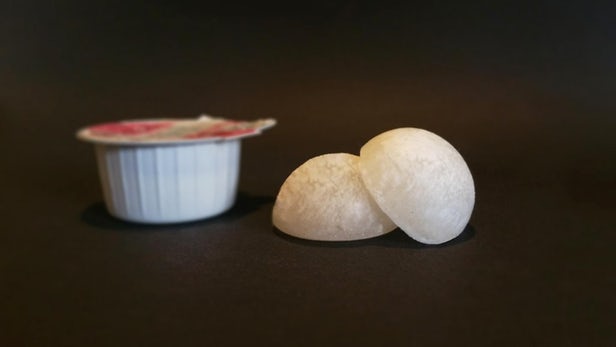Physicists use experiments to tell you how to quickly cool hot coffee.

For professional baristas, please follow the coffee workshop (Wechat official account cafe_style)
According to foreign media reports, how does the temperature of hot coffee change? How can we make the coffee cool quickly? A few days ago, a physicist had nothing to do to study this problem by laboratory method. And the whole experiment was published in Wired magazine.
Like many people, I also like to enjoy a good cup of coffee in my spare time. Not such as Lafayette, Fat-free Coffee or Vanilla Coffee, but a cup of hot traditional classic black coffee. But there is often a problem with hot coffee-it is too hot to be imported immediately. When we get a cup of hot coffee, we must find the best way to cool it down so that we can taste it quickly.
At present, I have two more ways to cool hot coffee. One is to open the lid of the coffee cup, the other is not to open the lid, but I will blow through the drinking hole in the coffee cup so that it can cool down.
Which method is the best? Let's try it through a simple physics experiment. Before that, I need some tools. First of all, there is no doubt that it is a coffee cup; second, we need some thermometers. What's the temperature of the hot coffee? I think 80 degrees Celsius is the most common hot coffee temperature. And what kind of temperature is suitable for drinking coffee? In my personal experience, 64 degrees Celsius is a pretty good choice.
Now let's do an experiment. First of all, I will simulate the hot water of black coffee into three cups of coffee.
Now we have three cups of hot coffee with a temperature of 80 degrees Celsius. Cup 1 has a lid, which is our standard coffee cup, while Cup 2 has no lid, and Cup 3 has a lid, but I keep blowing air into it through a small hole.
So which cooling method works better? Of course, I can taste each cup and compare it with my own feelings. But I will actually measure the temperature with a thermometer and put a temperature probe in the three cups.
In order to make the third cup as realistic as possible, I will blow air into it through the small hole. Not continuously, but at intervals, as if I was busy doing something else while waiting for the coffee to cool down. We collect temperature data through temperature sensors. Here are the values of three coffee cups that vary with temperature in a few minutes.
(the X axis is the time in seconds and the Y axis is the temperature. The blue line represents the temperature curve of cup 1 with time, the green line represents the temperature curve of cup 3 with time, and the yellow line represents the temperature curve of cup 2 with time. )
You can see the results of the experiment. Although the starting temperature is different, the cup without a lid obviously cools the fastest. Because in essence, we only have two ways to cool the coffee. First of all, we use heat conduction to lower the temperature of the coffee by placing the hot coffee next to the colder object to transfer the heat to the colder object. In my experiment, what is colder than coffee is the air and the base of the cup. This is not enough to have a significant effect on the temperature of coffee.
The second method is through evaporative cooling. When the water on the surface of the coffee evaporates, it will leave water molecules with lower heat energy, resulting in a decrease in the temperature of the coffee. Without the lid, the steaming area of the coffee in the cup increases, so it can cool quickly. If there is a lid, we can increase the evaporation rate by blowing air into the hole, but this is obviously not as effective as lifting the lid.
Now let's do another experiment. Insert a cup stopper into the drinking hole to see if it helps to keep the coffee warm.
I still repeated the early experiment with two cups. Cup 1 has a lid, while Cup 2 has a lid and a cup stopper. Here are the changes in the temperature of two cups of coffee over time:
(the X axis is the time in seconds and the Y axis is the temperature. The blue line represents the temperature curve of cup 1 with time, and the yellow line represents the temperature curve of cup 3 with time. )
The thermometer shows that the temperature of the two cups of coffee is about the same. I thought coffee without a stopper would cool faster. But this is not the case. It seems that the main function of the cup stopper is to prevent coffee from spilling. one
Important Notice :
前街咖啡 FrontStreet Coffee has moved to new addredd:
FrontStreet Coffee Address: 315,Donghua East Road,GuangZhou
Tel:020 38364473
- Prev

PhD student develops soluble milk capsules that could replace unhealthy and wasteful coffee cream balls
The small plastic containers used to pack coffee cream balls may not seem impressive on their own, but they add up to a lot of waste when you consider the amount used and discarded every day worldwide. Martha Wellner, a PhD student at Martin Luther University Halle Wittenberg in Germany, has developed milk capsules that dissolve completely when placed in hot liquids. To create this.
- Next

The most spacious coffee shop in the South sighs that Panamanian champion beans have their own milled rice and eel rice.
For the exchange of professional baristas, please pay attention to the coffee workshop (Wechat official account cafe_style), which is the most suitable adjective in Hong Kong, but this is not applicable in the southern district of Hong Kong Island before the opening of the MTR. One after another coffee shops have been opened in the district, such as Sensory Zero, which opened two years ago, which not only has good coffee and tea, but also passed the Japanese rice certification.
Related
- Why can American refills for free? The difference between Americano and American drip pot coffee
- Being chased out of the rain in front of Starbucks?! Store: Sheltering from rain under umbrellas poses a safety hazard
- The white moonlight has changed?! Lucky launches "Big Winter Pear American"
- Hand-brewed coffee three-stage method, high-sweet and universal brewing method to share! What does the high sweet water level of hand-brewed coffee mean?
- What is the difference between raw, refined and full espresso coffee? How to extract espresso and taste good?
- A complete list of coffee bean names and their meanings! What is Yejia Shefi coffee? Where is Mantelin coffee?
- What grade does Arida Manor Kaduai coffee beans belong to? What treatment is Arida ASD slow anaerobic sun exposure?
- The milk tea cup becomes smaller?! Overlord Tea Girl launches a new "Return to Yunnan" series
- Accused of selling counterfeit and high-priced coffee beans! Well-known boutique coffee brand "Oukelao" bowed and apologized!
- How to make espresso dumplings? Can I eat coffee and glutinous rice balls together?

